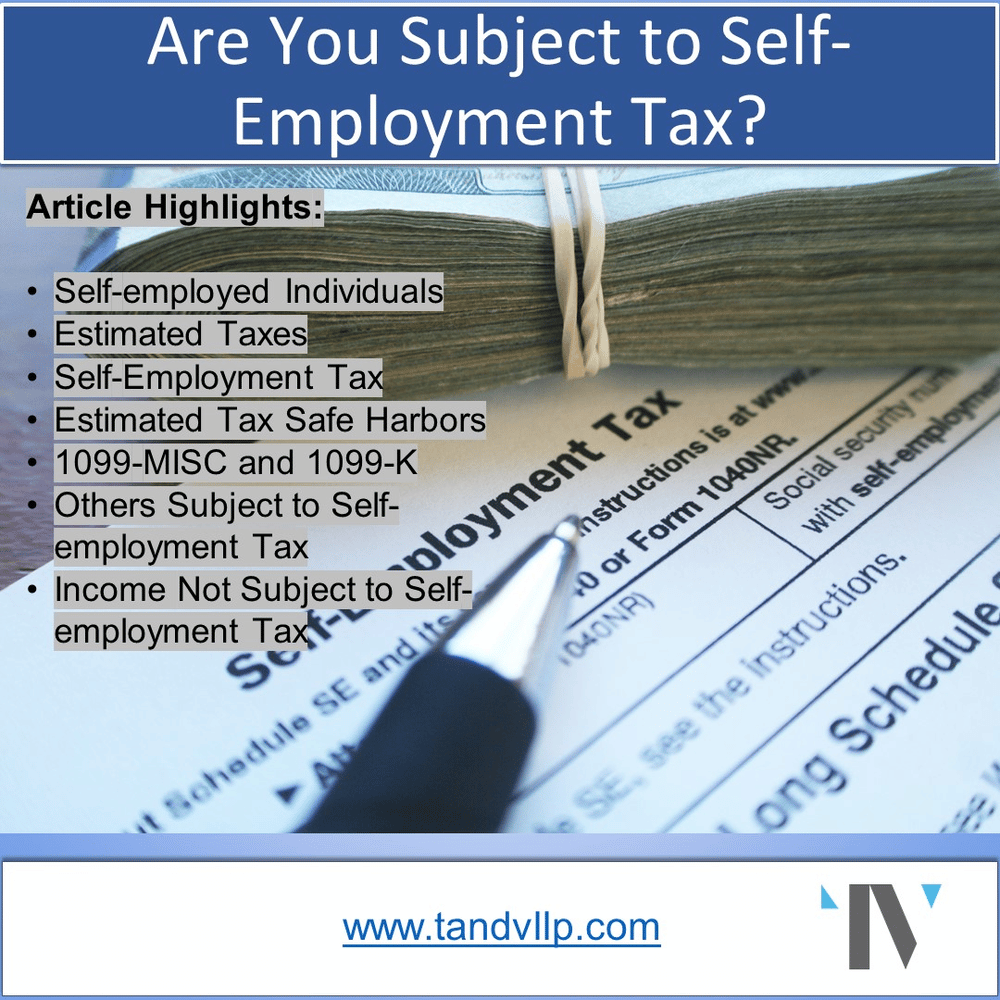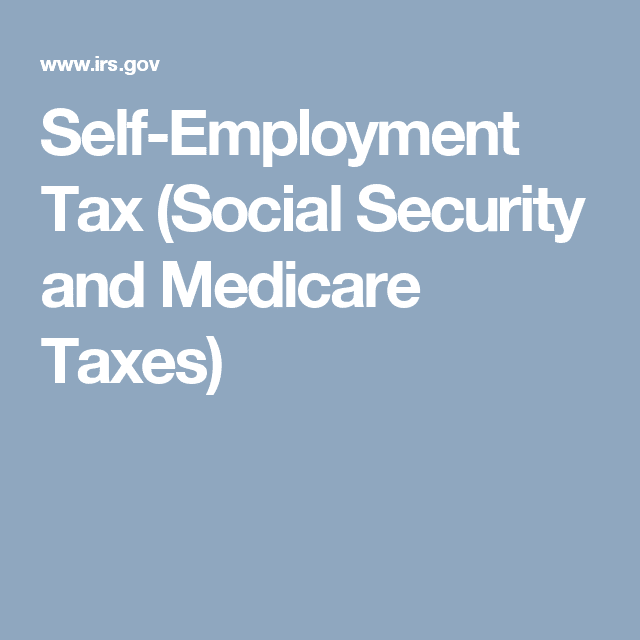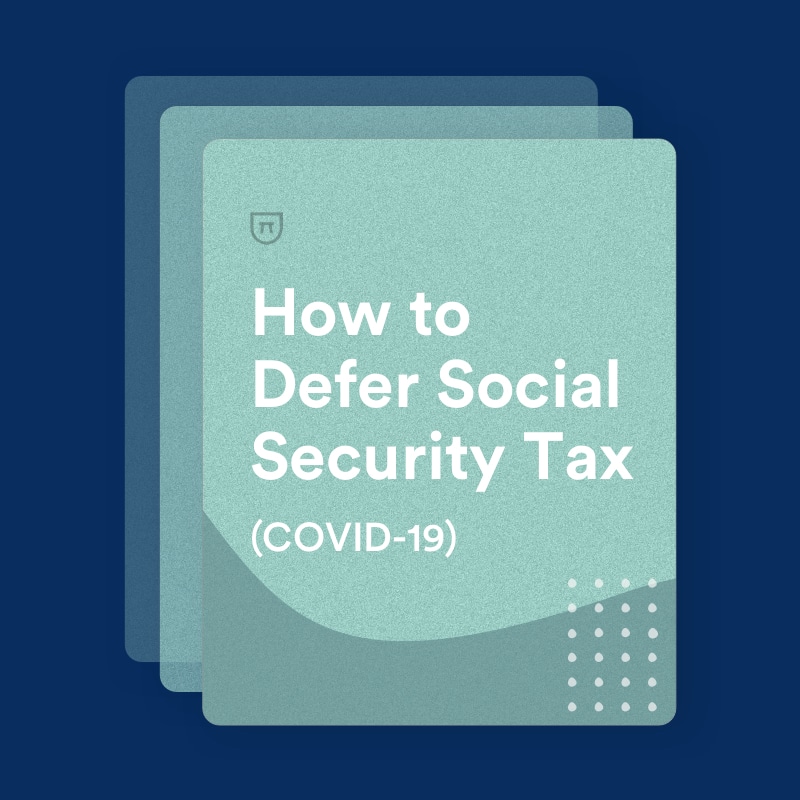How Do I Avoid Paying Tax When Self
The only guaranteed way to lower your self-employment tax is to increase your business-related expenses. This will reduce your net income and correspondingly reduce your self-employment tax. Regular deductions such as the standard deduction or itemized deductions won’t reduce your self-employment tax.
How Does Self Employment Affect Social Security Benefits
You report your earnings for Social Security when you file your federal income tax return. … If you’re self-employed, you pay the combined employee and employer amount, which is a 12.4 percent Social Security tax on up to $142,800 of your net earnings and a 2.9 percent Medicare tax on your entire net earnings.
The Typical Withholding Scenario And Basic Tax Rates
Typically, the employer contributes 6.2 percent of your income into Social Security and 1.45 percent into Medicare you pay the other 6.2 percent of Social Security tax plus 1.45 percent of your income for Medicare. Generally, your employer will deduct these amounts from your paycheck and forward them to the government along with its own contribution. When youre self-employed, however, that taskas well as the full amount of the taxesshifts entirely onto your shoulders. Currently, that means you have to pay 12.4 percent for Social Security and 2.9 percent for Medicaid. If you earn more than $200,000, for taxpayers filing as single, or $250,000, for married taxpayers filing jointly, youll have to pay an extra 0.9 percent for Medicare. In general, none of these taxes are considered deductible from your overall business overhead. This is the self-employment tax, and it does not take into account federal or state income taxes.
You May Like: How Much Do Veterans Get For Social Security
What Happens If You Dont Pay Social Security Taxes
If you are self-employed, you must pay social security taxes.
The social security tax is a payroll tax that is withheld from wages and salaries. The tax is used to fund the social security program, which provides benefits to retirees, disabled workers, and the families of deceased workers.
If you are self-employed, you must pay the social security tax on your net earnings from self-employment. Net earnings are your gross earnings from self-employment minus any deductions for business expenses.
Self-employed individuals who do not pay the social security tax may be subject to a penalty. The penalty is equal to the amount of tax that would have been due if the individual had been employed by someone else.
How Do I Report The Self

Of course, a new tax means new paperwork too. When you start a small business and you do not incorporate or form a partnership, you typically report the results of your operations on Schedule C and file it with your Form 1040.
You calculate your self-employment tax on Schedule SE and report that amount in the “Other Taxes” section of Form 1040. In this way, the IRS differentiates the SE tax from the income tax.
Don’t Miss: Attorneys For Social Security Disability
Congratulations You’ve Taken The First Step In The Overwhelming Process Of Figuring Out How To Pay Taxes If You Work For Yourself Here Are The Basics But It’s Also A Good Idea To Consult A Tax Specialist
Congratulations! You set up your business, you attracted clients, you completed the work, and you got paid. Now, its time to pay your taxes. Heres what you need to know about paying income taxes as an independent contractor.
In addition to paying federal and state income taxes, independent contractors, the self-employed, freelancers, and anyone who receives a 1099 are also responsible for paying self-employment income taxes, i.e, Social Security and Medicare taxes. Employers take these taxes out of employee earnings as part of payroll and split the cost with the employee. But since you are self-employed, youll need to pay for 100% of the cost yourself.
Talk To A Tax Attorney
Need a lawyer? Start here.
Copyright ©2022 MH Sub I, LLC dba Nolo ® Self-help services may not be permitted in all states. The information provided on this site is not legal advice, does not constitute a lawyer referral service, and no attorney-client or confidential relationship is or will be formed by use of the site. The attorney listings on this site are paid attorney advertising. In some states, the information on this website may be considered a lawyer referral service. Please reference the Terms of Use and the Supplemental Terms for specific information related to your state. Your use of this website constitutes acceptance of the Terms of Use, Supplemental Terms, Privacy Policy and Cookie Policy. Do Not Sell My Personal Information
Also Check: Social Security Office Opelousas La
What Individuals Should Do If They Are Unable To Pay In Full By The Installment Due Date
Individuals who are unable to pay the full deferred tax amount should pay whatever they are able to pay by the installment due dates to limit penalty and interest charges.
If the installment amount is not paid in full, IRS will send the taxpayer a balance due notice. Taxpayers should follow instructions on the notice to make a payment or apply for a payment plan. They can also visit the Paying Your Taxes page on IRS.gov for additional information about ways they can pay, what to do when they can’t pay, and viewing their tax account.
How To Calculate Your Social Security Benefits
The Social Security Administration uses a complex formula to calculate your benefits, which considers factors such as your birth year, your earnings history and the age at which you decide to start receiving benefits.
If you are self-employed, you are required to pay the same Social Security taxes as everyone else. In 2019, this includes a 12.4 percent tax on the first $132,900 of your net earnings , plus a 2.9 percent Medicare tax on all of your net earnings.
Don’t Miss: Social Security Office In Jackson Tennessee
Should I File Estimated Taxes
If you have worked as an employee, you know that what you get in your paycheck is usually less than what you really made. Why? Because your employer withheld money for Social Security, Medicare and income tax and sent that money to the government.
When you are self-employed, the entire burden for paying employment taxes and prepaying estimated income tax liability is left to you. The government wants you to make payments of your estimated taxes throughout the year in quarterly installments. If you don’t, you may be subject to underpayment penalties.
- For more information on estimated taxes, see this IRS article on Estimated Taxes.
TurboTax Self-Employed will ask you simple questions about your life and help you fill out all the right forms. Perfect for independent contractors and small businesses. Well search over 500 tax deductions to get you every dollar you deserve and help you uncover industry-specific deductions.
What Is The Average Monthly Social Security Check
Social Security offers a monthly benefit check to many kinds of recipients. As of May 2021, the average check is $1,430.73, according to the Social Security Administration but that amount can differ drastically depending on the type of recipient. In fact, retirees typically make more than the overall average.
Recommended Reading: When Will Social Security Offices Open For In-person Appointments
How Minimizing Taxes Minimizes Benefits
Besides the Social Security tax deductions you can take when you’re self-employed, many business expenses can reduce your tax liability.
“Business expenses reduce your overall tax, which ultimately lowers your Social Security taxes. Business tax deductions are a way of minimizing self-employment tax and Social Security taxes,” says Carlos Dias Jr., founder and managing partner of Dias Wealth LLC in Lake Mary, FL.
But keep in mind that this can work against you regarding Social Security benefit calculations, which are based in part on your taxable earnings. Here’s why. The more deductions you have, the lower your Schedule C income. Lowering your Schedule C income is a good way to reduce how much federal, state, and local income tax you owe. However, this lower amount becomes part of your Social Security earnings history and means you may receive lower benefits in retirement than if you didn’t take those deductions.
When You Dont Have To Pay Social Security Taxes

You dont owe Social Security taxes on the portion of your wages that exceed a certain earnings threshold. The wage index for 2022 is $147,000 , and you dont owe Social Security taxes on the portion of your earnings that exceed that amount.
Lets say your annual earnings were $148,000. The percentage of taxes you owe would be applied up to the first $147,000 but not the $1,000 above that. This annual cap on Social Security taxes also applies to employees who work for someone else.
Recommended Reading: Social Security Administration Phone Number
How Much Can You Make Self Employed Without Paying Taxes
You have to file an income tax return if your net earnings from self-employment were $400 or more. If your net earnings from self-employment were less than $400, you still have to file an income tax return if you meet any other filing requirement listed in the Form 1040 and 1040-SR instructions PDF.
A Guide To Social Security Tax
OVERVIEW
Understanding how the Social Security tax impacts you as an individual taxpayer can be complicated. Here, we provide the answers to a few common questions about this tax, from self-employment to receiving benefits.
Social Security didn’t always exist. The concept was implemented in the Social Security Act of 1935, which provided benefits for the primary worker in a family when they retired at age 65. It set the groundwork for the Social Security payroll tax that started getting collected in 1937 under the Federal Insurance Contributions Act . This tax was designed to fund the Social Security benefits that would be paid out.
Since its inception, additional benefits have been added to the Social Security program, including survivors’ benefits, disability benefits, and more. Here’s what you need to know about how the Social Security tax works today.
You May Like: Is Social Security Tax Free
How Fica Taxes Work For Employees
FICA taxes are collected through two channels: the employee and the employer. Hereâs how it works on both ends.â
The employeesâ share of FICA taxesâ
Throughout the year, FICA is automatically deducted from a W-2 employeeâs gross pay and remitted to the IRS in a process called withholding.
Many employees donât even realize theyâre paying FICA taxes! When they receive their W-2s however, the amounts paid in are reported in boxes 4 and 6.
Social Security tax is 6.2%, and itâs assessed on the first $142,800 of earned income. . Income exceeding $142,800 is exempt from Social Security.
Medicare tax is 1.45%, and itâs assessed on all earned income, with no current threshold limits. The combined rate is 7.65%.
The employerâs share of FICA taxesThe employer is required to âmatchâ the FICA taxes paid by their employees. This effectively means theyâre paying the same rate, so when an employee hits the maximum taxable threshold for Social Security, the employer also becomes exempt. The employer portion of FICA is an added cost to having employees, so the IRS allows employers to write off their half of the tax. This part is also relevant for self-employed people â more on that later!
How Can I Avoid Paying Taxes On A 1099
Legal methods you can use to avoid paying taxes include things such as tax-advantaged accounts s and IRAs), as well as claiming 1099 deductions and tax credits. Being a freelancer or an independent contractor comes with various 1099 benefits, such as the freedom to set your own hours and be your own boss.
Read Also: Social Security Office Denton Tx
What Happens When Youre Self
When you’re self-employed, you’re considered both the employee and the employer. This means it’s your responsibility to withhold Social Security from your earnings, contributing the employer’s portion of Social Security as well as the individual’s portion.
Instead of withholding Social Security taxes from each paycheckmany self-employed people don’t get regular paychecksyou pay all the Social Security taxes on your earnings when you file your annual federal income tax return. This amounts to both your contribution and your business’s contribution.
IRS Schedule SE: Self-Employment Tax is where you report your business’s net profit or loss as calculated on Schedule C. The federal government uses this information to calculate the Social Security benefits you’ll be entitled to later on down the road.
Self-employment tax consists of both the employee and employer portion of Social Security and the employee and employer portion of Medicare , which makes the total self-employment tax rate 15.3%.
It may seem like you’re getting the short end of the stick because you have to pay both the employee and the employer portion of the tax, but that isn’t necessarily true.
If you are self-employed and earned $400 or less, you wont owe Social Security taxes.
Employment And Fica Tax
Your employment income and FICA tax paid is determined first. Your employer withholds Social Security and Medicare tax from your paychecks as an employee. The Social Security tax is capped at a maximum each year at a specific income level. When your income for the year exceeds that level, you stop paying the Social Security tax. The Medicare tax is not capped.
Recommended Reading: Social Security Office In Forest Mississippi
Lo: Calculate Fica Taxes For Employees And Seca For The Self
Calculate FICA taxes for employees and SECA for the self-employed.
Richard, your employee, earns $220,000 from you during 2015. He is married, but his wife does not have any earned income. You must start withholding the additional 0. 9 percent Medicare tax when Richards earnings exceed $200,000. Richard will be over-withheld because the couples combined income is beneath the married, filing jointly threshold of $250,000.
- Learning Objectives
- Self Employed Contributions Act Taxes
Unlike the other FICA taxes, the 0. 9 percent Medicare surtax is imposed on the employee portion only. There is no employer match for the Medicare surtax . You withhold this 0. 9 percent tax from employee wages and you do not pay an employers portion. Also, unlike the other FICA taxes, you withhold the 0. 9 percent Medicare surtax only to the extent that wages paid to an employee exceed $200,000 in a calendar year. You begin withholding the surtax in the pay period in which you pay wages in excess of this $200,000 floor to an employee and you continue to withhold it each pay period until the end of the calendar year.
Video advice: Taxable Social Security Benefits Calculator
What’s The Difference Between Seca Tax And Fica Tax

Employees who work in the U.S. pay Social Security and Medicare tax as required by the Federal Insurance Contributions Act .
Here’s a table that details the differences:
| SECA Tax vs. FICA Tax | |
|---|---|
| Employee on Form W-2, Employer on quarterly tax report | Using Schedule SE on tax return |
*Minus half of the calculated tax amount for determining your adjusted gross earnings.
You May Like: National Committee To Preserve Social Security And Medicare
What Counts As Self
Self-employment income is earned from carrying on a “trade or business” as a sole proprietor, an independent contractor, or some form of partnership. To be considered a trade or business, an activity does not necessarily have to be profitable, and you do not have to work at it full time, but profit must be your motive.
Who Must File Self
If your net earnings from self-employment equal $400 or more, you must do both of these:
- File Schedule SE
- Pay self-employment tax
This is true regardless of your age, and even if youre receiving Social Security benefits.
Youre considered self-employed if you own your own business or the company you work for classifies you as an independent contractor. Because tax is usually not withheld from self-employment income , youre required to make estimated tax payments during the year to cover your federal income tax and self-employment tax.
You May Like: Social Security Administration Springfield Mo
Is Social Security Taxed After Age 70
Here’s why: Every dollar you earn over the 85% threshold amount will result in 85 cents of your benefits being taxed, plus you’ll have to pay tax on the extra income. … After age 70, there is no longer any increase, so you should claim your benefits then even if they will be partly subject to income tax.
How To Calculate Social Security Taxes For Self Employment
How you can Calculate Social Security Tax for Self-employed. The Irs imposes a self-employment tax on self-employed individuals. This self-employment tax includes a Social Security tax along with a Medicare tax. Normally, self-employed individuals be forced to pay a Social Security tax of 12.4 % around the first
The Irs imposes a self-employment tax on self-employed individuals. This self-employment tax includes a Social Security tax along with a Medicare tax. Normally, self-employed individuals be forced to pay a Social Security tax of 12. 4 % around the first $106,800 of earnings. However, this years Tax Relief Act has temporarily decreased the Social Security Tax to 10. 4 %. Determine oneself-employed earnings including wages, tips and internet earnings for that current tax year. In case your total earnings exceeds $106,800, you would employ the $106,800 figure for that calculation because this is all the earnings taxed through the IRS for Social Security. For instance, assume your overall self-employed earnings for that year is $50,000. Determine the present self-employed Social Security tax rate. For that 2011 tax year, this figure is 10. 4 %. Multiply your overall self-employed earnings through the current Social Security tax rate expressed like a decimal. Ongoing exactly the same example, $50,000 x . 104 = $5,200.
Video advice: Social Security Tax Calculation Payroll Tax Withholdings
Don’t Miss: Social Security Administration San Diego